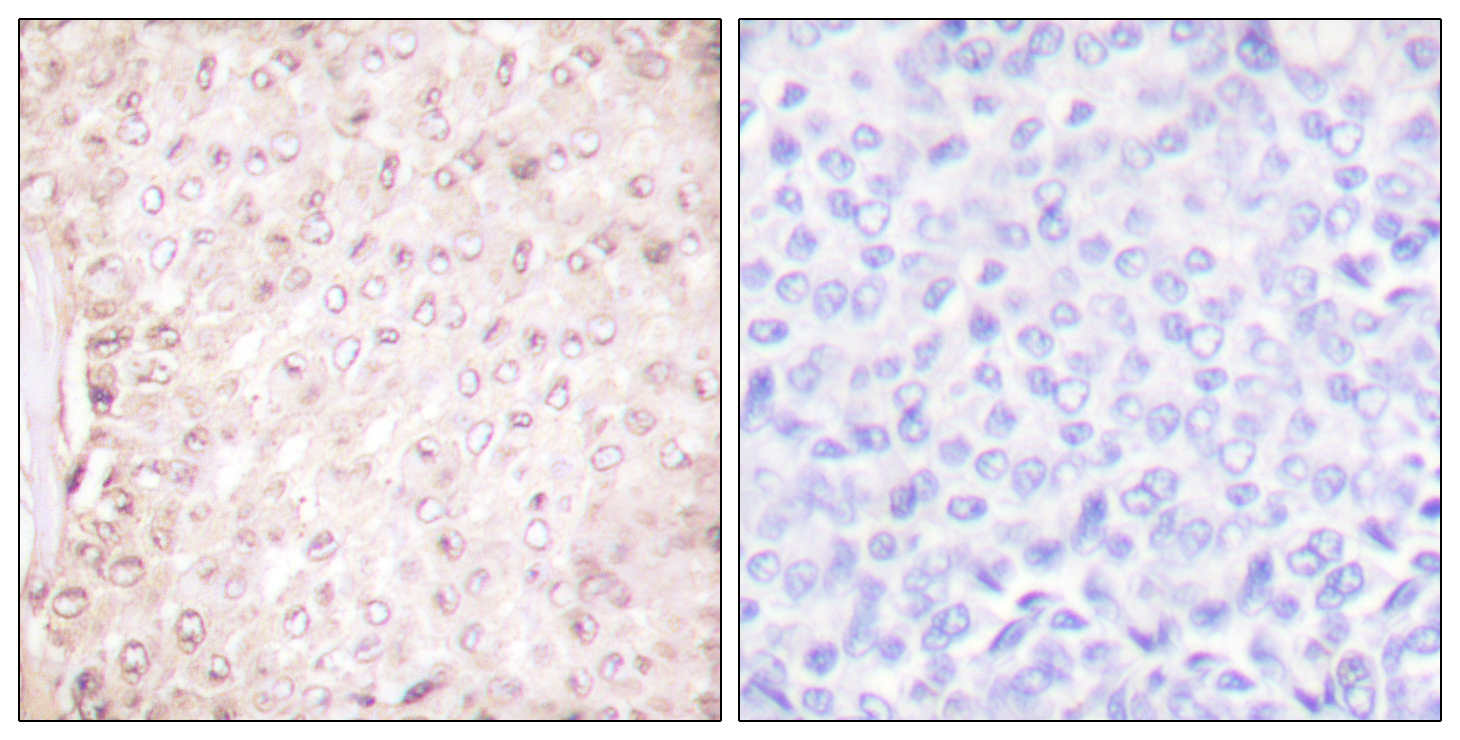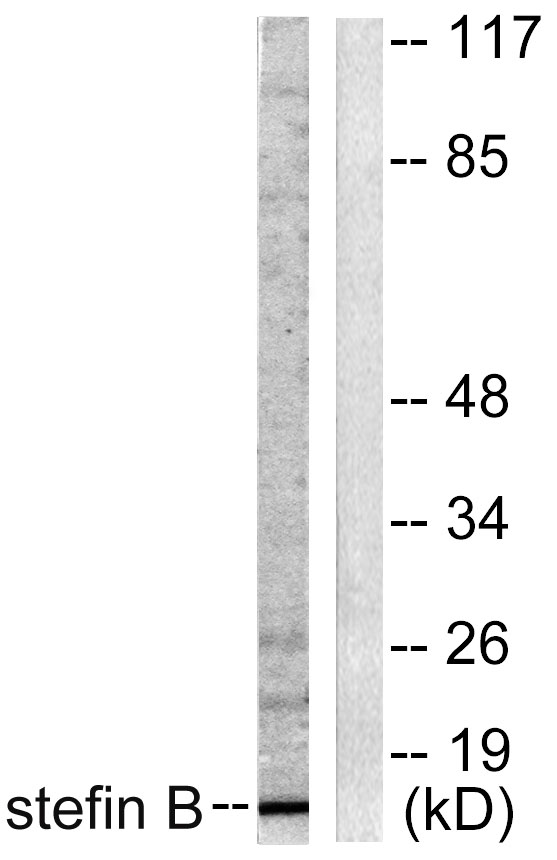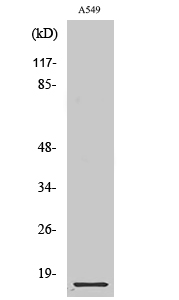产品名称
Cystatin B Rabbit Polyclonal Antibody
别名
CSTB; CST6; STFB; Cystatin-B; CPI-B; Liver thiol proteinase inhibitor; Stefin-B
存储缓冲液
Liquid in PBS containing 50% glycerol, 0.5% BSA and 0.02% New type preservative N.
Human Gene Link
http://www.ncbi.nlm.nih.gov/sites/entrez?db=gene&term=1476
Human Swissprot No.
P04080
Human Swissprot Link
http://www.uniprot.org/uniprotkb/P04080/entry
Mouse Swissprot No.
Q62426
Mouse Swissprot Link
http://www.uniprot.org/uniprot/Q62426
Rat Gene Link
http://www.ncbi.nlm.nih.gov/sites/entrez?db=gene&term=25308
Rat Swissprot Link
http://www.uniprot.org/uniprot/P01041
免疫原
The antiserum was produced against synthesized peptide derived from human Stefin B. AA range:49-98
特异性
Cystatin B Polyclonal Antibody detects endogenous levels of Cystatin B protein.
稀释度
WB 1:500 - 1:2000. IHC 1:100 - 1:300. IF 1:200 - 1:1000. ELISA: 1:20000. Not yet tested in other applications.
宿主
Polyclonal, Rabbit,IgG
背景介绍
The cystatin superfamily encompasses proteins that contain multiple cystatin-like sequences. Some of the members are active cysteine protease inhibitors, while others have lost or perhaps never acquired this inhibitory activity. There are three inhibitory families in the superfamily, including the type 1 cystatins (stefins), type 2 cystatins and kininogens. This gene encodes a stefin that functions as an intracellular thiol protease inhibitor. The protein is able to form a dimer stabilized by noncovalent forces, inhibiting papain and cathepsins l, h and b. The protein is thought to play a role in protecting against the proteases leaking from lysosomes. Evidence indicates that mutations in this gene are responsible for the primary defects in patients with progressive myoclonic epilepsy (EPM1). One type of mutation responsible for EPM1 is the expansion in the promoter region of this gene of a CCCCGCCCCGCG rep
组织表达
Cerebellum,Placenta,
细胞定位
Cytoplasm . Nucleus .
功能
disease:Defects in CSTB are the cause of progressive myoclonic epilepsy type 1 (EPM1) [MIM:254800]. EPM1 is an autosomal recessive disorder characterized by severe, stimulus-sensitive myoclonus and tonic-clonic seizures. The onset, occurring between 6 and 13 years of age, is characterized by convulsions. Myoclonus begins 1 to 5 years later. The twitchings occur predominantly in the proximal muscles of the extremities and are bilaterally symmetrical, although asynchronous. At first small, they become late in the clinical course so violent that the victim is thrown to the floor. Mental deterioration and eventually dementia develop.,function:This is an intracellular thiol proteinase inhibitor. Tightly binding reversible inhibitor of cathepsins L, H and B.,similarity:Belongs to the cystatin family.,subunit:Able to form dimers stabilized by noncovalent forces.,
纯化
The antibody was affinity-purified from rabbit antiserum by affinity-chromatography using epitope-specific immunogen.




